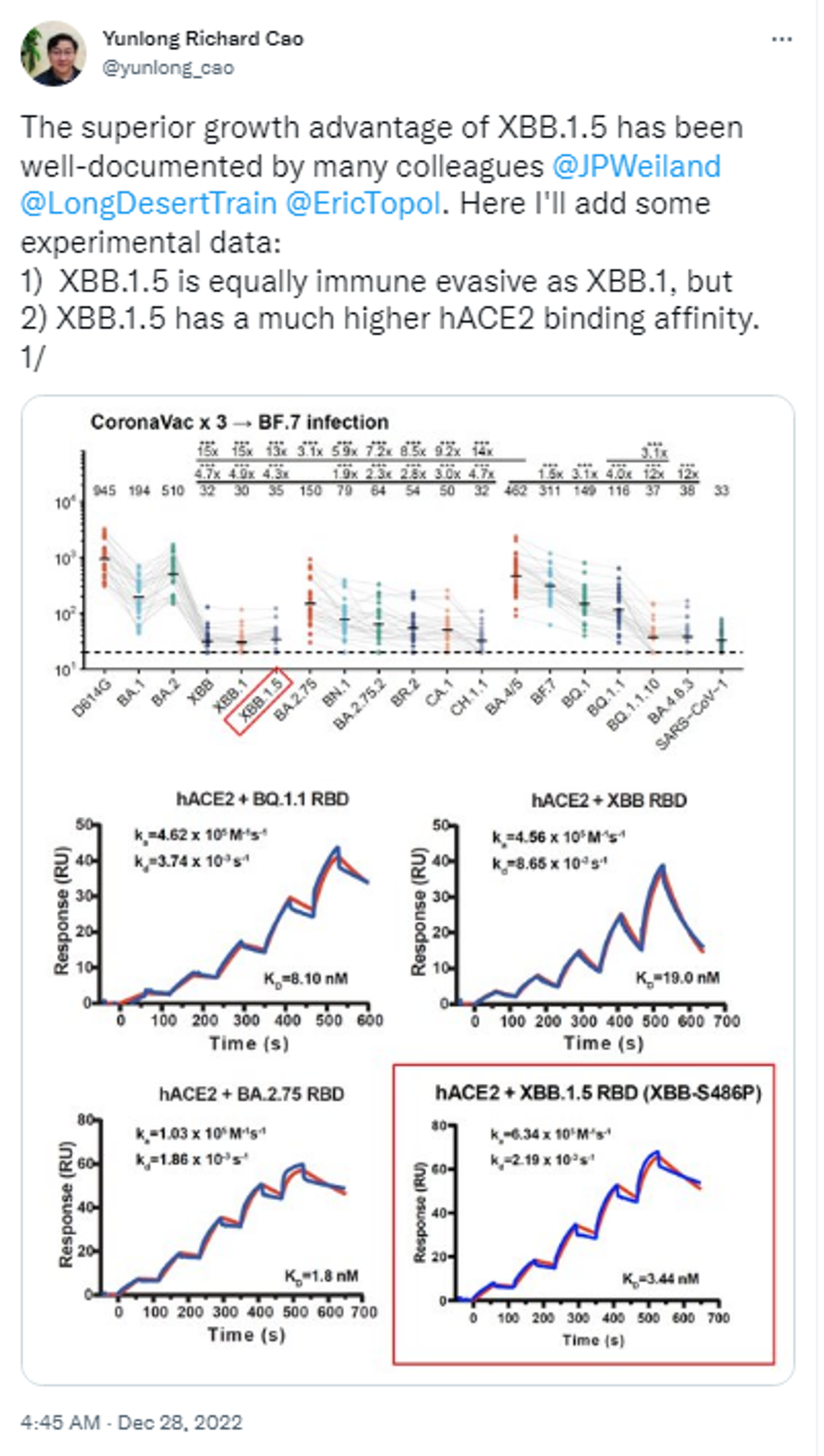'The Kraken' Unleashed: What is Known About 'Most Transmissible' Omicron Offshoot

© AFP 2023 / KIRILL KUDRYAVTSEV
Subscribe
In the final days of 2022, hospitalizations were notching up across the US, as a new version of omicron gained ground, according to data from the Centers for Disease Control and Prevention. About 40 percent of confirmed US COVID-19 cases were attributed to a subvariant named XBB.1.5.
After having faced off against the earlier alpha, beta, gamma, and delta variants of COVID-19, the global population has been dealing with omicron for the past months, with its latest spinoff believed to be the most immune-evasive.
Ominously dubbed "the Kraken" in late 2022, the latest omicron offshoot is officially named XBB.1.5 and is highly contagious, according to the World Health Organization (WHO). The global health body confirmed on January 4 that XBB.1.5 has a "growth advantage" above all other sub-variants.
“It is the most transmissible subvariant that has been detected yet. The reason for this are the mutations that are within this subvariant of omicron allowing this virus to adhere to the cell and replicate easily,” WHO official Van Kerkhove told reporters in Geneva.
However, XBB.1.5 did not appear to be more serious in its impact on patients, the WHO said, adding that a close eye would be kept on hospital data, infection rates, as well as ongoing laboratory studies of "the Kraken."
Here is what we know about it so far.
What is XBB.1.5 Omicron Variant?
The new SARS-CoV-2 variant XBB.1.5 is a descendant of XBB, which was a recombinant of the BA.2.10.1 and BA.2.75 sublineages of the omicron variant. XBB surged in parts of Asia, specifically Singapore, in early October 2022, but appeared to then stall in growth and fade away.
Where Did XBB.1.5 Originate?
XBB.1.5, which has a mutation that has been linked to immune escape, was first detected in the Northeastern US around New York and Connecticut. The offshoot has "made landfall" in 29 countries to date, according to WHO data, and is responsible for an estimated 40 percent of all COVID-19 cases in the US, according to the Centers for Disease Control and Prevention estimates. The Public Health Agency of Canada (PHAC) has detected 21 cases of the new SARS-CoV-2 variant. It has been spotted in the UK, with countries in Europe also witnessing its incursion, but more specific data is yet to be released.
How is New Omicron Subvariant Different?
A new mutation called F486P has "supercharged" the XBB.1.5 variant, according to Andy Rothstein, a computational biologist cited by UK media reports.
This allows the virus to attach to ACE2 receptors in the body with greater ease, presumably making it more adept at spreading and infecting people than the XBB it is descended from.
"This variant is the product of recombination – a fusion of two different BA.2 variants. A key mutation in XBB.1.5 (known as the F486P mutation) means that this variant is able to escape the immune protection from previous vaccinations and past infections. This mutation also increases the variant’s infectivity – it interacts more strongly with the ACE2 receptor [COVID entry point to the cell] and thereby gets into cells more easily," Professor Lawrence Young, a virologist at Warwick University, told media.
The "recombination" stems from a mix of genomes from different virus variants, which can occur when a person is infected with two or more variants simultaneously.
According to Yunlong Richard Cao, a scientist and assistant professor at Peking University, also pointed to how XBB.1.5 both evades protective antibodies and is superior in its ability to bind to cells.

Screenshot of Twitter account of Yunlong Richard Cao, a scientist and assistant professor at Peking University.
© Photo : Twitter
Could XBB.1.5 Trigger a Fresh COVID Wave?
On the one hand, preliminary research suggests that XBB.1.5 is both fundamentally more infectious and better at dodging immunity built up from vaccines and previous infections than the previous omicron variant – BA.5 and its sublineages such as BQ.1.
Scientists and public health officials monitoring the XBB subvariant have expressed concerns that strains that have many mutations could render vaccines, including the omicron boosters, less effective. Columbia University scientists have warned that subvariants hailing from the XBB family could “result in a surge of breakthrough infections as well as re-infections.”
What Do Experts Advise Against XBB.1.5?
Health experts recommend staying up to date on COVID-19 vaccinations. Bivalent COVID-19 vaccine boosters are suggested as still offering protection against XBB.1.5, according to preliminary data.
"It's not ideal, but it's better than it could have been. Pretty good protection against XBB in terms of hospitalization and death, probably not much of anything to preventing infection," Dr. John Swartzberg, an infectious-disease expert and professor emeritus at the University of California, Berkeley's School of Public Health, was cited by media as saying.
Where it is possible, people ought to reduce transmission by reducing contacts, wearing masks in crowded indoor spaces, and isolating if you have symptoms, health experts add.

